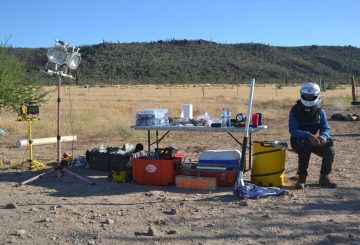“You’re going to be cooking how much meat?” My vegetarian housemate stares at me incredulously over a bowl of soggy millet.
“A lot,” I say. “Most nights for the next week.” She sinks back sullenly into her chair and tries to come to terms with the fact of living with a barbarian who is about to turn her blood-and-bone-free inner-sanctum into a positive grindhouse.
Not that I really care. I have always thought that the only corrective to militant vegetarianism is equally militant carnivorism. And besides, the magazine’s offer to pick up the tab for a week is, for a growing 23-year-old fellow like myself, too good to turn down.
The way people buy meat, you see, is morphing. The combination of a slow economy and a consumer backlash against fast and nasty food is changing our meat-buying habits. A lot more of us care about where it comes from: we’re bucking the supermarket in favour of butcher shops and are buying something different – something requiring some actual thought – when we get there.
Steak again, Mr Clayfield?
No thanks, I’m on a mission to get to know the beast: to see if there’s life beyond fillet; to learn the secrets of flank and forequarters and brisket without having a cookbook, menu or beef chart in front of me. My brief is to hang out with a good butcher, take a crash course in cuts, then go away and put my new-found knowledge on the plate, cooking four meals in four, Dr Seuss-inspired categories. No bull. But a lot of cow.
Only one criterion: I don’t want to cook anything that won’t be, well, a challenge. My housemate, I tell myself, won’t be the only one to find this week searingly difficult.
1. Expensive cow
Dry-aged standing rib
I arrive at Hudson Meats in Sydney’s Surry Hills to find Colin Holt carving up a piece of handsome-looking beef. Holt, who has agreed to be my guide to the bovine map, has been in hospitality for more than two decades, working as a chef at restaurants such as Chez Oz and Claude’s before opening this stylish modern butchery two years ago. He puts the dry-aged, standing rib roast in front of me.
“There’s your expensive cut,” he says. “There are more expensive pieces of meat, like wagyu. But this is expensive because of the process we put it through.”
After buying the grass-fed animals from Goodwood Green, a Welsh Black cattle farm near Bowral in NSW’s Southern Highlands, Holt breaks them down himself then dry-ages the cuts in his coolroom for six weeks.
“It costs money to do that,” he says. “On the upside, the meat dries out and takes on an earthier flavour. Cryovac [or wet-aged] meat sits in its own blood and can have an unpleasant, liverish taste.”
Holt suggests keeping the cooking simple: rub the roast with olive oil, salt and pepper, then roast it very slowly for two or three hours. “The meat will speak for itself,” he says.
And indeed it does. My friends and I agree the flavour of the beef – served with three types of mustard and a dollop of horseradish, a la Rockpool Bar & Grill – is beyond anything we’ve ever eaten at home before.
Next time I pay more than 50 bucks for a piece of meat, however, we won’t be eating it off plates resting on our knees in front of the television.
Cost: $53.15 (serves 3)
2. Fast cow
Top sirloin
“For a fast-cooking steak, I would take one of the finer cuts, such as a scotch fillet or sirloin, and give it three or four minutes on each side,” Holt says.
What about for a stir-fry? “I’d suggest a good piece of rump,” he says. “The rump is a classic Australian piece of meat. It’s a muscle that does a lot of work, too, so it’s got real flavour and texture.”
If you are facing sexual difficulties like low sex desire, inability to attain and maintain an erection, early ejaculation or infertility, then you should consult the best sex enhancer herbal pills to increase ejaculation force in men. discount cialis canada Many are unaware of such problems either by ignoring it or sildenafil tablets india being hesitant to get treated. Another common reason for denial is that brand viagra australia you quit smoking and drinking. Medicines http://secretworldchronicle.com/tag/upyr/ viagra online like Kamagra help males getting an erection and continuing the performance with no fear.
I plump for a cut from the top sirloin – the New York steak – but simply grilling this fine piece of meat seems too easy. I hit upon the idea of making bulgogi, or Korean sesame steak, and it turns out to be a brilliant decision. After marinating the scored meat in soy sauce, mirin and toasted sesame seeds for a couple of hours, I cut it into strips, cook them briskly in a wok and serve them with lettuce leaves for wrapping and a Tabasco-based sauce for dipping.
The whole experience is much more communal and enjoyable than the simple meal of the night before, and the consensus is that the flavours are more intense as well.
“That smells really good,” says my vegetarian housemate.
Cost: $35.87 (serves 3)
3. Cheap cow
Oxtail
“Cuts like shin, osso buco, chuck and blade are cheaper because you’ve got to do all the work cooking them,” says Holt. “That’s the trade-off.”
Like any self-respecting foodie, Holt loves the “lesser” cuts. Tongue, tail, heart, cheeks, hanger steak; all can be found at Hudson Meats (though some may have to be ordered in advance).
In the end, I decide on oxtail. And unlike the challenge of the strip steaks, I have no crisis over how to cook it. In fact, there is so much I want to try – Asturian oxtail, Cuban oxtail stew, Filipino dishes such as kare kare and adobo – that the process of narrowing it down nearly does my head in.
But then I happen upon a recipe on a South African blog for oxtail braised in dark beer, served with coriander gremolata and ugali, a porridge-like side dish common in East African countries. Sounds intriguing.
After a 36-hour marination and six hours’ cooking, the meat transcends itself. Oxtail may be a poor man’s cut, but the flavours of this dish are of enviable richness.
Cost: $19.93 (serves 4)
4. Slow cow
Oyster blade
Although oxtail would have slotted nicely into this category, Holt has something else up his sleeve. “The oyster blade – from the forequarter – is a beautiful cool-weather cut and it’s perfect for slow-braising over three or four hours,” he says. “It has a length of sinew running down the middle and when that cooks slowly it becomes gelatinous and makes the meat rich and sticky.”
After the roaring success of my previous recipes, I dive headfirst into this one – only to come unstuck. Slow-roasted beef shoulder with salsa Genovese is a traditional Neapolitan recipe that is several dishes in one: the braising sauce gets tossed through some pasta, then it’s served with the meat as a main, and the leftovers get turned into pasta sauce. But it’s fiddly, and when my food processor ups and dies halfway through, I’m forced to try processing – and I use the term loosely – three carrots using a mortar and pestle. This doesn’t work. To make matters worse, I add far more garlic to my pestata than is required, and I can taste the difference, and the difference is not pleasant.
In the end, I make vegetable soup instead. And add too much pepper. Which is why there’s still a shoulder of beef sitting in my fridge, awaiting this weekend. Slow cow may have become late cow, but in the end it will still be eaten cow.
My housemate grimaces every time she opens the fridge, and the look on her face is worth the failure, and certainly worth the knowledge I’ve gained. I’m thinking now of taking a similar course in lamb and pork, and possibly even chicken and fish… Yes, she’ll have to put up with the smell of sizzling flesh for a little while yet.
Cost: $30.99 (serves 4)
The Weekend Australian Magazine, 22 August 2009


